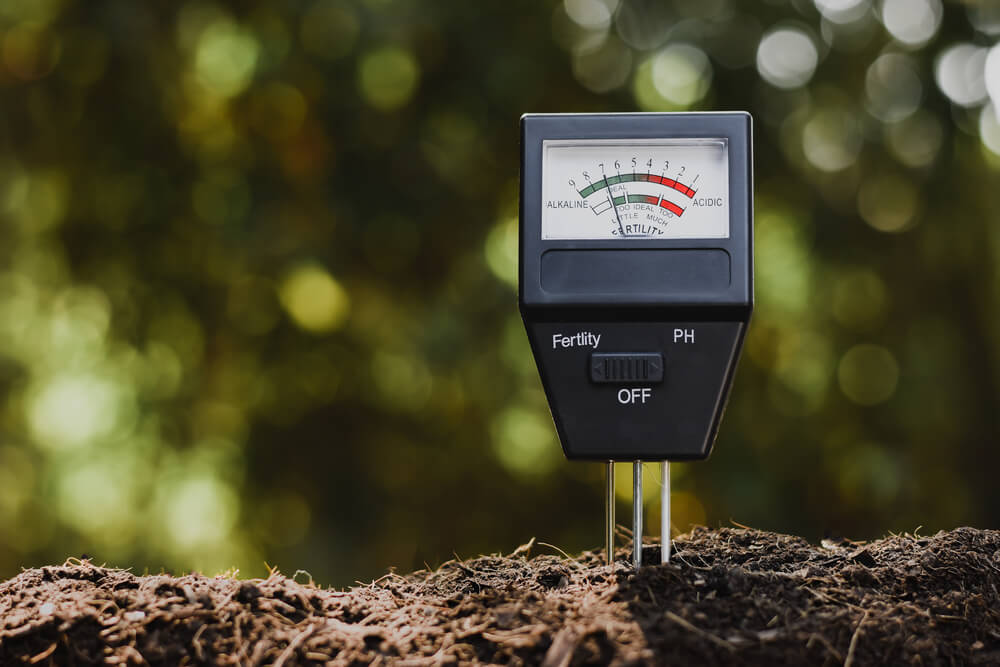It is common for finished composts to have a pH of between 6 and 8 in the range of neutral. To raise pH (reduce acidity), your compost should be turned or aerated to improve air circulation and foster aerobic bacteria. Compost pH can be lowered (made more acidic) by using more acidic materials (browns), such as pine needles or oak leaves.
Table of Contents
What Should The pH Of Compost Be?
Compost microorganisms thrive under neutral to acidic conditions, with pH levels ranging from 5.5 to 8.
In the early stages of decomposition, organic acids are produced. Acidic conditions promote fungi growth and the breakdown of lignin and cellulose.
Finished Compost pH
It is common for finished composts to have a pH of between 6 and 8 in the range of neutral.
While home compost is typically made from vegetable trimmings, food waste, and other compostable household items, the pH of the compost at its beginning is likely to be more acidic, perhaps between 5.0 and 7.0.
As the compost decays, the pH of the compost changes, so at any given point in the process, the pH will fluctuate.
Plants generally thrive in a neutral pH of around 7, but some prefer a more acidic or alkaline environment.
What happens if compost is too acidic (low pH level)?
It is natural for compost to have a slightly acidic pH; however, an overabundance of some ‘wetter’ ingredients may disrupt this balance.
As a result, the compost heap may become a bit smelly and slow to decompose.
What happens if compost is too alkaline (high pH level)?
High pH levels often hinder plants that do best in acidic soil, so if your compost pile is too alkaline, you will need to add organic matter to increase its acidity.
How to know if my compost pH is too high or too low?
In a compost bin, pH levels will vary throughout the aerobic composition process as microorganisms act on the material and in different parts of the bin if the material is not regularly mixed.
As a result of anaerobic decomposition, your contents will become darker, wetter, and more acidic because organic acids are being produced.
Over time, the pH of the compost will neutralize. In mature compost, you should not be able to identify the former materials (e.g., banana skins, leaves, etc.). The compost should be crumbly and dark brown in color. It should smell earthy or musty. It is considered mature when most bacteria have ceased to be active.
You should conduct a pH test as part of your composting process. You can determine the pH of compost by using a soil test kit following the manufacturer’s instructions, or if your compost is moist but not muddy, you can simply use a pH indicator strip. It is also possible to measure the pH range of compost using an electronic soil meter.
How to lower compost pH
If you use large quantities of acidic materials such as pine needles or oak leaves, you can lower the pH of your compost (make it more acidic).
It is important to note that compost naturally affects your soil’s pH level in a positive manner. It is incredible how compost can maintain a balanced pH value.
If your soil is too acidic, compost will naturally raise its pH level. Do you have overly alkaline soil? Adding compost to soil lowers its pH level.
How to raise compost pH
When it comes to reducing the acidity of your compost, experts recommend using wood ash rather than lime.
To raise the pH of compost, it is recommended that you aerate it. Compost with a pH reading of 7 is considered neutral, so if your compost has a pH reading less than 7, it is suggested that you add some alkaline matter.
Compost piles can benefit from adding nitrogen content from coffee grounds, which are close to pH neutral.

